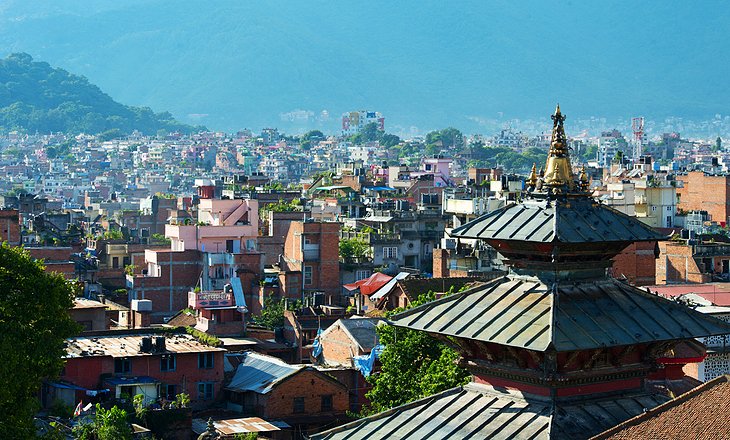



Budget Nepal Tour Packages, Best Tour Operator in Nepal , Local Tour Operator in Nepal , Local Travel Agent in Nepal, Travel Hed, Nepal is one of the smallest countries of the world. Nepal covers only 0.3 % of the total land area of Asia and 0.03% of the total land area of the world. It is the landlocked country that lies in the lap of two giant nations; India in the East, West & South and China in the North. This country is on the developing phase. Though being a small country in the world Nepal is full of natural beauty, unique features and cultural diversity. Rhododendron is the national flower and cow is regarded as the national animal. Similarly, Lophophorus (Himalayan Monal) is the national bird of Nepal. Previously, Dhaka Topi and Daura Suruwal for men used to be the national dress of Nepal. But, nowadays cultural dresses of all the ethnic groups are considered as the national dress of Nepal. Nepal used to be the only kingdom in the world. But, after dethroning King Gyanendra Nepal has become the secular state. In this small country there are about 125 ethnic groups and all of them are leaving respecting each other. Similarly, there is religious tolerance in Nepal. Even a single drop of blood has not been shed in Nepal for the sake of religion. Nepal is culturally rich country. In Nepal, majority of people follow Hinduism. According to the 2011 census report of Nepal, 84.2% of the Nepalese follow Hinduism, 9.0% people follow Buddhism, 4.4% people follow Muslim, 3.0% people follow Kirat, 1.42% follow Christianity, and 0.9% follow other religions like Jainism, Vaisnavism etc. Similarly, if we talk about land features of Nepal, Nepal is the only country having extreme topographic variation ranging from 70 meter to 8848 meter from the sea level. Nepal has the world's highest peak Mt. Everest at an altitude of 8,848 meter from sea level. Similarly, Nepal has been distributed into three ecological regions; Himalayan, Hilly and Terai. Himalayan region covers 20% of total land area, Hilly region covers 63% of the total land area, and 17% of the total land area is covered by Terai. Terai region is known as the granary of Nepal. According to census report of 2011, 73.9% of people are fully depended on agriculture. Though, 73.9% percent Nepalese are fully dependent on agriculture only 28.7% of Nepal's land area is arable. Nepal has more than 6000 rivers and tributaries. Nepal is the second largest country in terms of water resource. Nepal is dependent on other countries mostly due its landlocked features. Nepal is a country which has been exporting raw materials and importing finished goods. Hence, Nepal is bearing trade deficit since long time. Nepal is very rich country in terms of resources. But, the resources have not been used in its full extent. Research have shown that Nepal has the potentiality to produce 83,000 Megawatt electricity from the fast flowing rivers but unfortunately due to lack of huge investment in these sector Nepal has been able to produce only 1% of its total potential capacity. To be a developed country in the world, firstly Nepal must not depend on other countries in terms of hydropower. As Nepal is the country full of natural attractions, Nepal can be the suitable tourism destination for the nature lover tourists. In Nepal, the tourists can go for a bush walk, jungle safari, elephant ride, hunting, white water rafting, honey hunting, bird watching, etc. Similarly, Nepal is also the suitable tourism destination for adventure lover tourists as well as culture lovers. Nepal is very in culture and traditions. Within this small area Nepal is a settlement of more than 120 ethnic groups. Some of the ethnic groups are on the verge of extinction; Kusunda is one of them. Raute, Chepang, etc are the other ethnic groups that are in the context of losing their identity. In Nepal still there are ethnic groups that are living in the primitive ages. Nepali people have been protecting their culture for commercial purpose too. Protecting the culture has been an income source for Tharu community people. They have been earning handsome amount for showing their cultural dances and serving their local cuisine for the tourists. Most of the tourists visiting Chitwan often don't miss watching Tharu cultural shows and eating Tharu cuisine.